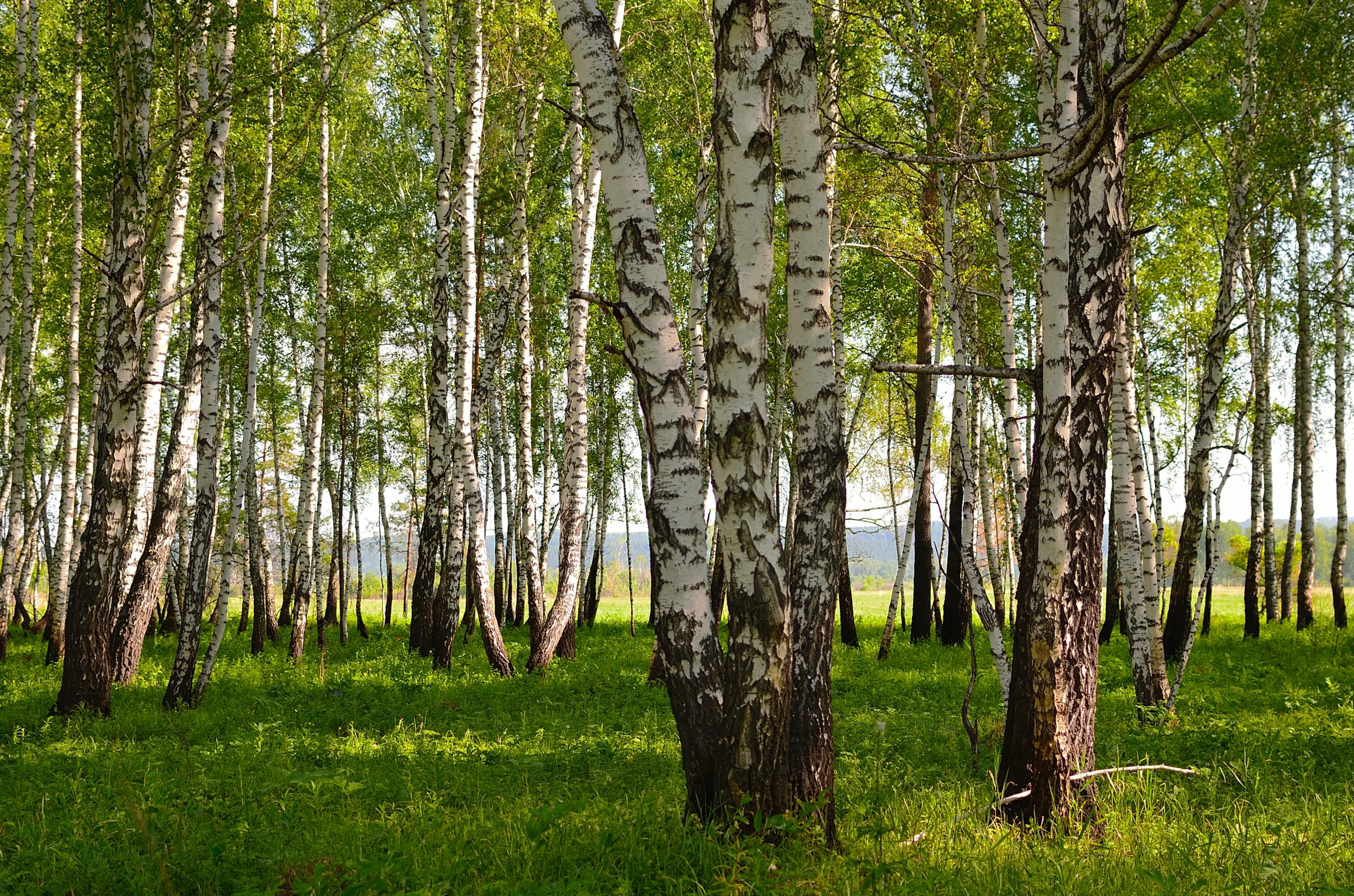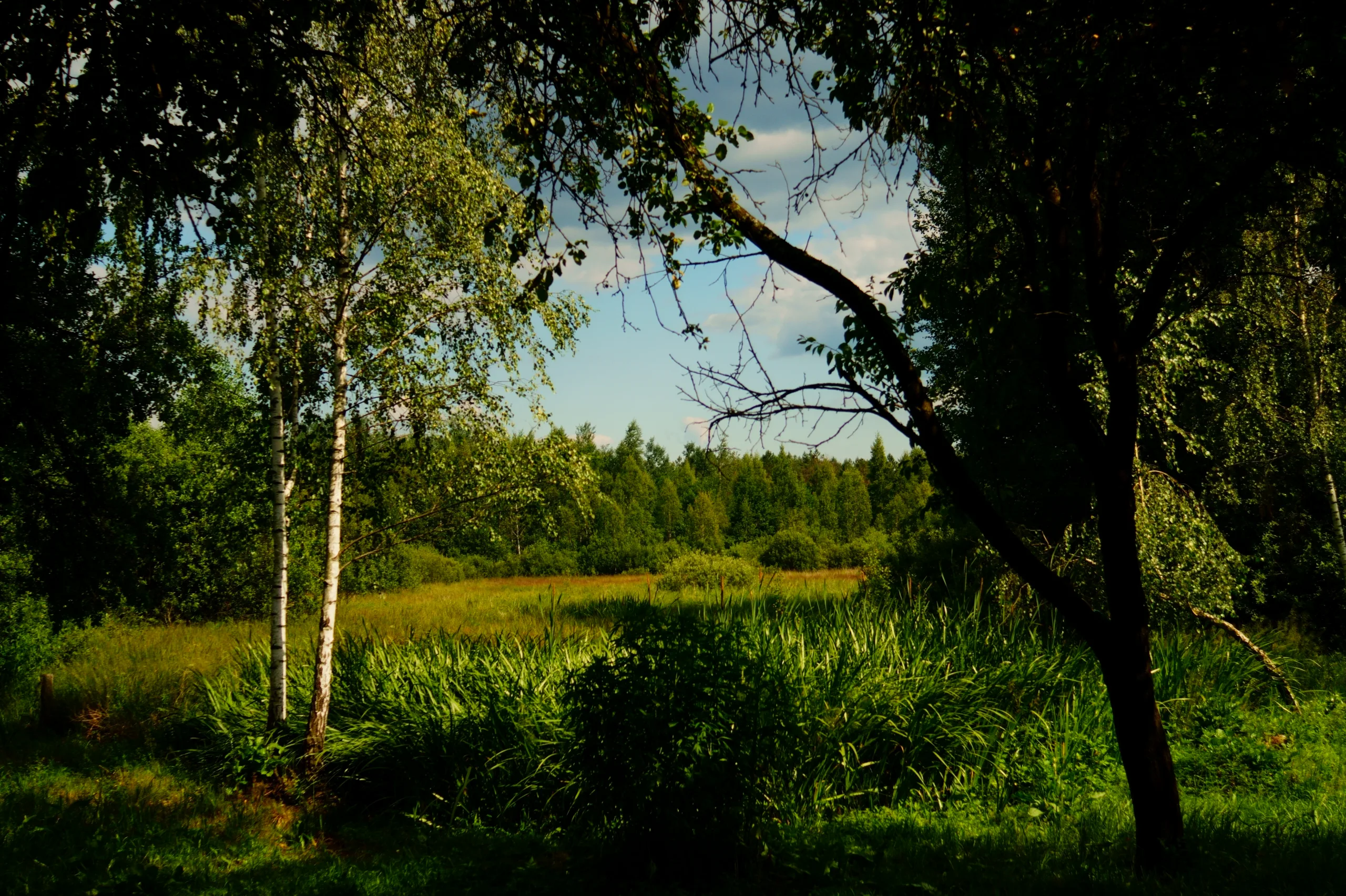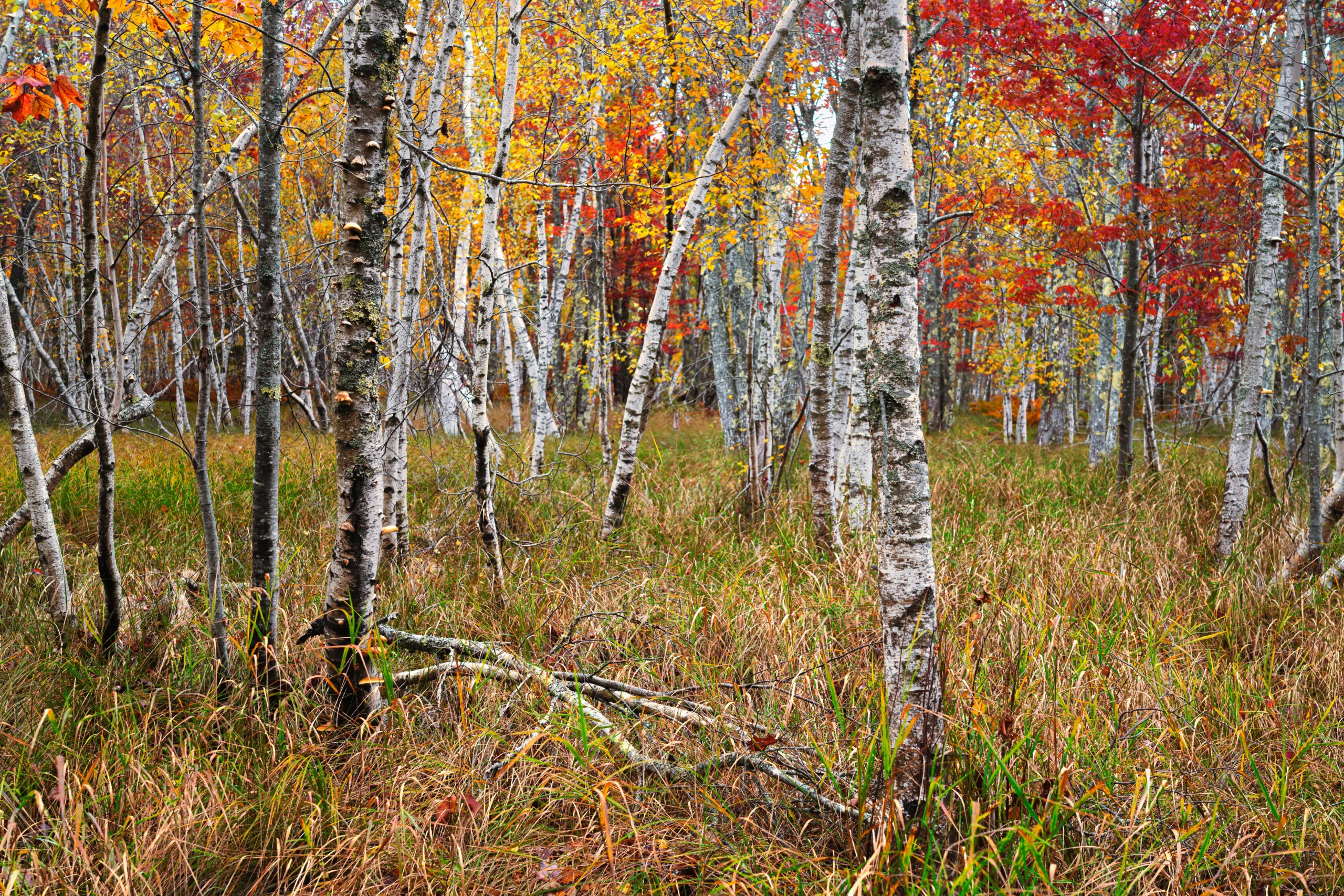Do birch trees kill grass? It’s a common question many homeowners and gardeners have when considering planting birch trees in their yard. If you’re wondering if birch trees can cause harm to your grass, this article can help clarify the situation. We’ll explore the potential effects of birch trees on your lawn, as well as how you can prevent or mitigate any damage that may occur. By the end of this article, you’ll be better informed about the risks associated with planting birch trees in your yard and what you can do to protect your grass.
Yes, Birch trees can kill grass. The shallow root system of the Birch tree takes up a lot of the moisture and nutrients in the soil, depriving the grass of the resources it needs to survive. This can cause the grass to die off or become unhealthy.
Type of Trees Can Kill Grass
Grasses are delicate plants that require certain conditions to survive and thrive. Unfortunately, some types of trees can be detrimental to grass, and may even cause it to die. Different types of trees have varying levels of impact on grass, so it is important to understand the potential effects before planting. It is also important to consider the type of grass being grown in order to determine which type of tree would be most suitable.
Some trees are considered invasive species, meaning they spread rapidly and can take over an area quickly. These trees pose a serious threat to grass because their roots spread quickly, taking over soil and blocking sunlight from reaching the grass. Common invasive species include silver maple, Norway maple, cottonwood and box elder tree.
Other trees may not be considered invasive species but can still have a significant impact on grass growth if they are planted too close together or near an existing grassy area. Trees with shallow roots such as birch or walnut can prevent water and nutrients from reaching the soil below them, leaving the grass struggling to survive. Similarly, large evergreen trees with dense branches such as pine or spruce can block sunlight from reaching the ground below them, preventing photosynthesis from taking place in the grass beneath them.
It is important to note that not all trees will kill grass if planted too close together or near an existing lawn area. Some types of trees can actually help promote healthy growth in nearby grasses by providing shade and acting as a windbreak for sensitive plants. These include oak, willow and sycamore trees.
When planting any type of tree near an existing lawn area or when starting a new lawn area from scratch, it is important to consider which types of tree are most suitable for the particular type of grass being grown. Some research should be done beforehand in order to ensure that any potential negative impacts on nearby grasses are minimized while still benefiting from the presence of beneficial shade-providing trees.
Birch Trees Affecting Grass Growth
Birches are a common type of tree whose presence can have both positive and negative effects on the growth of grass. On one hand, birches provide shade and shelter to the grass, which can help to protect it from extreme temperatures, pests, and other environmental stressors. On the other hand, they can also block out sunlight, leading to stunted growth in grass and other plants.
The presence of birches can also lead to an accumulation of fallen leaves or needles on the ground that can act as a barrier between the soil and the sun. This will prevent essential nutrients from reaching the grass’s roots, preventing it from growing optimally. In addition, birches are known for their shallow root systems which can cause soil erosion near their trunks when heavy rains occur. This leads to a disruption in moisture levels in the soil which can be detrimental for grass growth.
The overall impact of birches on grass growth depends on several factors such as climate conditions, soil composition, and maintenance practices such as mowing or fertilizing. In general, if they are properly managed and maintained, birches should not have a significant negative impact on grass growth in most situations. Additionally, when planted correctly they can provide beneficial shade and shelter for nearby plants.
Types of Damage Can Birch Trees Cause to Grass
Birch trees can cause a variety of damage to grass. One of the most common types of damage is shading. Birch trees naturally grow close together and spread their branches wide, making them effective at blocking sunlight from reaching the grass below. This lack of sun can lead to stunted growth, yellowing, and even death in some cases.
In addition to shading, birch trees can also cause physical damage to grass. The shallow roots of birch trees often spread out close to the surface and cause compaction in the soil beneath them. This compaction reduces the amount of water and nutrients available for the grass, leading to weakened growth and potential death.
Birch trees can also drop debris onto the grass below them, such as leaves or branches that have been broken off by wind or animals. This debris can cause physical damage as well as provide a breeding ground for pests and disease-causing organisms like fungi and bacteria.
Finally, birch trees produce a sap that is sticky, sweet-smelling, and highly flammable. This sap can build up on nearby surfaces like grass blades and provide fuel for fires that could potentially spread throughout an area quickly if not contained in time.
Overall, birch trees can be an attractive addition to any landscape but they do need to be managed carefully so they don’t cause too much damage to the surrounding grass or vegetation. If properly maintained they should not cause any significant harm but it’s always a good idea to keep an eye on how your birch trees are impacting your lawn or garden space just in case.
How Long Does it Take for Birch Trees to Kill Grass?
Birch trees are known for their shallow root systems, which can spread out and take over a lawn. If you have a birch tree in your lawn, you may be wondering how long it takes for the tree to kill the grass beneath it. The answer depends on the species of birch tree and the health of your grass.
Birch trees with shallow roots can damage grass by competing for available water and nutrients. This is especially true if your soil is already poor in nutrients or if there is limited rainfall in your area. In general, birch trees will start to kill the grass within 6-12 months of being planted.
The species of birch tree can also influence how quickly it will kill the grass beneath it. Some species such as white birch and river birch are more aggressive than others such as yellow birch or paperbark birch. White and river birches have shallower roots that spread further and faster than other species, so they can cause more damage to the grass beneath them in less time.
The health of your grass can also affect how quickly a birch tree will kill it. If your lawn is already weak or struggling, then a birch tree may be able to take it over much faster than if your lawn was healthy and well maintained. You should also consider any surrounding environmental factors that could contribute to the death of your lawn, such as drought or excessive shade from other trees nearby.
In general, if you want to prevent a birch tree from killing the grass beneath it, you should mulch around its base, keep up with regular fertilization and watering, and mow frequently around its trunk to reduce competition from weeds or other plants trying to invade your lawn. Doing these things can help keep both your lawn and your birch trees healthy and happy!

Are There Other Plants That Can Be Affected by Birch Trees?
Birch trees can have a significant impact on the surrounding plant life. They can be very aggressive in nature, and can spread quickly if not properly managed. This can lead to birch trees shading out other plants, and this is especially true of smaller shrubs and understory plants that are unable to compete with the rate of growth of the birch trees.
Birch trees also have an effect on soil chemistry, as they produce large amounts of litter which can alter the acidity levels of the soil beneath them. This can affect the ability of other plants to grow in these areas, as some species may not be able to tolerate such acidic conditions. In addition, birch trees also produce allelopathic chemicals which are released into the soil and water, and these chemicals can inhibit or even kill other nearby plants.
Finally, birch trees are also known for their shallow root systems which can compete with other plants for water and nutrients. These shallower roots are able to spread quickly over a large area, making it difficult for other plants to establish themselves in such an environment.
In short, yes there are many other plant species that can be affected by birch trees due to their aggressive nature and competition for resources such as light, water and nutrients. It is important to manage birch tree populations carefully in order to minimize their negative impacts on nearby plant life.
Protecting Your Lawn from the Effects of a Nearby Birch Tree
Birch trees can be beautiful additions to any landscape, but they can also have a negative impact on nearby lawns. Since birch trees are heavy feeders, their extensive root systems draw nutrients away from nearby grass. This can result in dry, patchy areas of lawn that are difficult to maintain. To protect your lawn from the effects of a nearby birch tree, you will need to take several steps.
The first step is to reduce the amount of water and fertilizer that you put on your lawn near the birch tree. When you water and fertilize your lawn, some of the nutrients may be taken up by the birch tree’s root system before they can reach your grass. To prevent this from happening, you should use less fertilizer and water in these areas than in other parts of your lawn.
You should also consider aerating your soil around the birch tree on a regular basis. Aeration helps to break up compaction and allow air and water to reach deeper into the soil where they can benefit both your grass and the birch tree’s roots. If you do not have an aerator, you can rent one from most hardware stores or garden centers.
Finally, it is important to make sure that your lawn is properly mowed around the tree as well. The soil beneath a birch tree is often dry and patchy due to its roots taking up all of the moisture in the area. If possible, try to avoid mowing too closely around these patches since this will only make them worse. Instead, mow at a higher level so that there is still some grass left behind when you are finished mowing.
By following these steps, you should be able to protect your lawn from the effects of a nearby birch tree while still enjoying its beauty in your landscape.
Alternatives to Removing the Tree
When a tree is killing the grass around it, there are alternatives to removing it. The first option is to prune the tree, removing any dead or weak branches. This will help the tree thrive and provide additional light and air circulation for the grass below. Another option is to transplant the tree, moving it to a new location where there is more space for its roots and allowing it to have access to more nutrients.
Mulching around the base of the tree can also help reduce competition from weeds and grasses that may be trying to take up nutrients from the soil. Additionally, adding more topsoil or compost can help encourage healthy grass growth in areas where the tree has taken away nutrients from the soil.
Aeration can also be a useful way of allowing oxygen and water into compacted soils around trees, leading to better growth of grasses in these areas. Finally, applying fertilizer specifically designed for grass can help encourage stronger growth in areas where trees have taken away nutrients from the soil.
Ultimately, when dealing with a tree killing grass around it, removal should be considered as a last resort. With careful management of resources and attention to proper pruning techniques, you may be able to save both your tree and your lawn.

Conclusion
Birch trees have an extensive root system, which can reach up to four times the distance of their canopy. This can cause damage to nearby lawns and gardens, as they compete with grass for water and nutrients. In some cases, this competition may ultimately lead to the death of grass or other vegetation. To prevent this, it is important to properly space birch trees when planting them and to provide adequate irrigation that will support both the tree and any nearby vegetation.
It is also important to note that the shallow root system of birch trees may make them more vulnerable to wind damage than other tree species. Therefore, it is important to plan ahead when planting a birch tree in a windy area.
In conclusion, while birch trees can be attractive additions to any landscape, they can also be detrimental by killing grass if not properly managed. Careful consideration should be given when selecting a location for these trees and proper irrigation should be provided to ensure their survival as well as that of any nearby vegetation.

My interest in trees started when I first saw the giant sequoias in Yosemite.
I was a teenager then, and I remember thinking, “I need to learn more about this.”
That moment stuck with me.
A few years later, I went on to study forestry at Michigan Tech.
Since graduating, I’ve worked in a mix of hands-on tree care and community education.
I’ve spent over ten years helping people understand how to plant, maintain, and protect the trees in their neighborhoods.
I don’t see trees as just part of the landscape.
They are living things that make a real difference in our daily lives.
